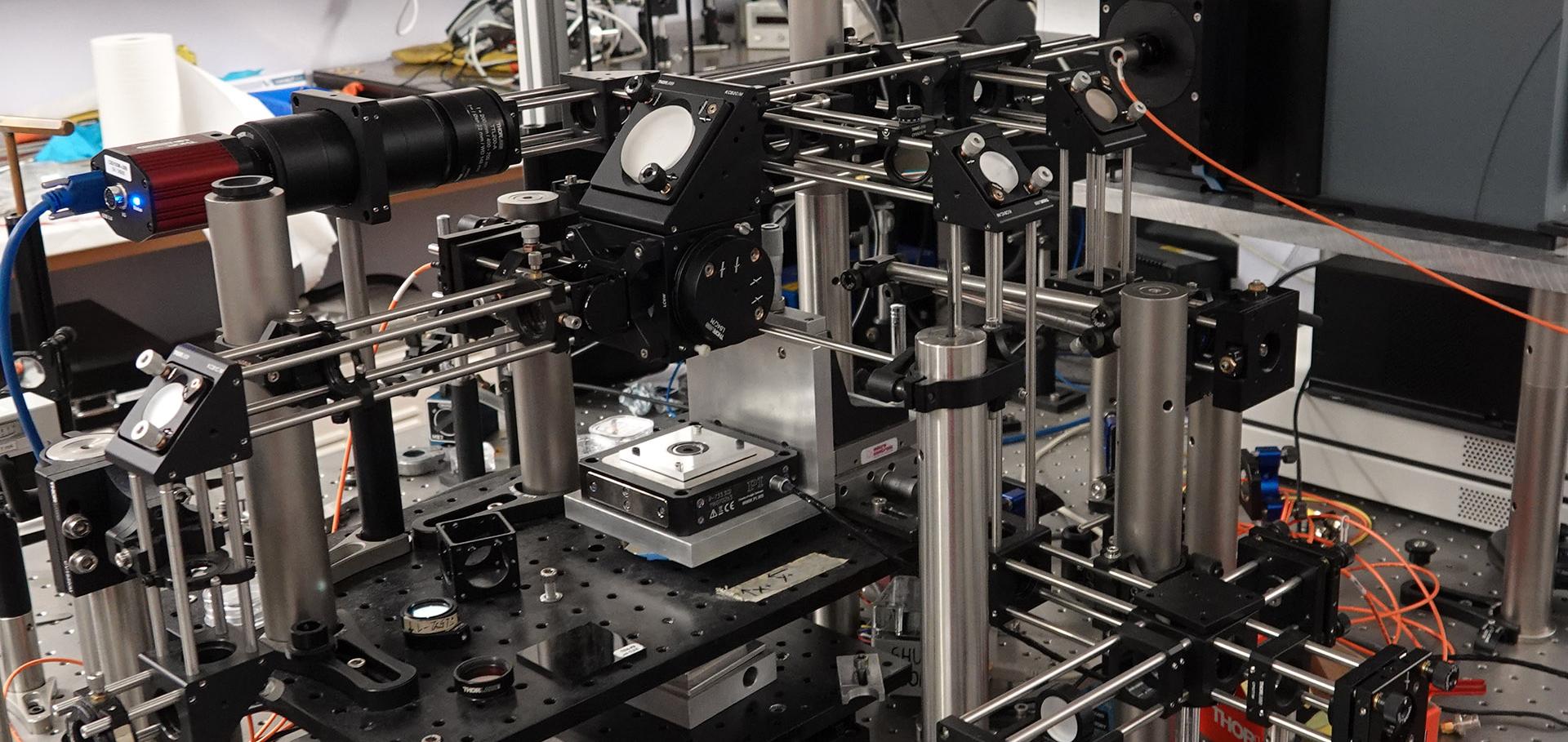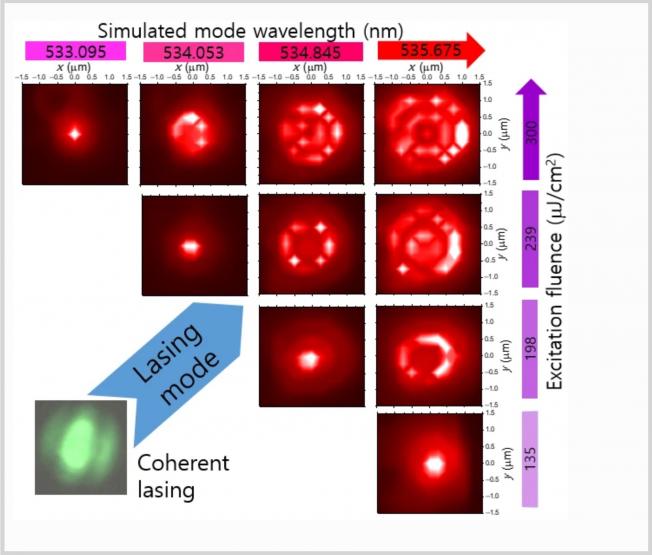Two-photon excitation of asymmetric GaN/AlGaN quantum discs
AIP CONF PROC 893 (2007) 981-982
Abstract:
By using two-photon absorption spectroscopy we have performed time-integrated and time-resolved photolurninescence measurements on several coupled asymmetric GaN quantum discs, with embedded AlGaN barriers. We observe free-carrier screening, with an enhancement due to tunneling between the coupled quantum discs.Free carrier screening in coupled asymmetric GaN quantum discs
Proceedings of SPIE - The International Society for Optical Engineering 6352 I (2006)
Abstract:
We present an investigation of free-carrier screening in coupled asymmetric GaN quantum discs with embedded AlGaN barriers using time-integrated and time-resolved micro-photoluminescence measurements, supported by three-dimensional multi-band k.p computational modeling. We observe that with increasing optical excitation the carrier lifetime decreases and emission energy blue-shifts. This originates from the screening of built-in piezo- and pyroelectric fields in the quantum discs by photo-generated free-carriers. Due to non-resonant tunneling of carriers from the smaller disc to the larger disc, free carrier screening is enhanced in the larger disc. The non-resonant tunneling was found to have a significant role in samples with a thin barrier, as the screening decreased with barrier thickness (i.e. decreased tunneling). Computational modeling was in good agreement with the experimental results.Crystal-encapsulation-induced band-structure change in single-walled carbon nanotubes: Photoluminescence and Raman spectra
Physical Review B - Condensed Matter and Materials Physics 74:24 (2006)
Abstract:
We report studies of the modification of the band structure of single-walled carbon nanotubes through encapsulation of the inorganic material manganese ditelluride (Mn Te2). Using photoluminescence excitation mapping we show that this leads to a global reduction of their first and second band gap energies by a similar percentage (up to 3.8%). We interpret this as due to the additional screening which causes a change in the internal dielectric constant and a possible lowering of the carbon-carbon transfer integrals. The shifts increase with increasing tube diameter due to the increased quantity of filled materials. © 2006 The American Physical Society.Two-photon excitation spectroscopy of coupled asymmetric GaN/AlGaN quantum discs
Nanotechnology 17:23 (2006) 5754-5758
Abstract:
By using two-photon excitation spectroscopy we take advantage of the increased spatial resolution to perform time-integrated and time-resolved photoluminescence measurements on several discrete stacks of GaN quantum discs. The stack structure consisted of coupled asymmetric GaN quantum discs with embedded AlGaN barriers, which were grown at the tip of a GaN nanocolumn. We observed that with increasing optical excitation power the carrier lifetime decreased due to free-carrier screening, with an enhancement of the screening effect in the larger quantum disc due to carrier tunnelling from the smaller quantum disc. © 2006 IOP Publishing Ltd.Dependence of carrier localization in InGaN/GaN multiple-quantum wells on well thickness
Applied Physics Letters 89:25 (2006)



